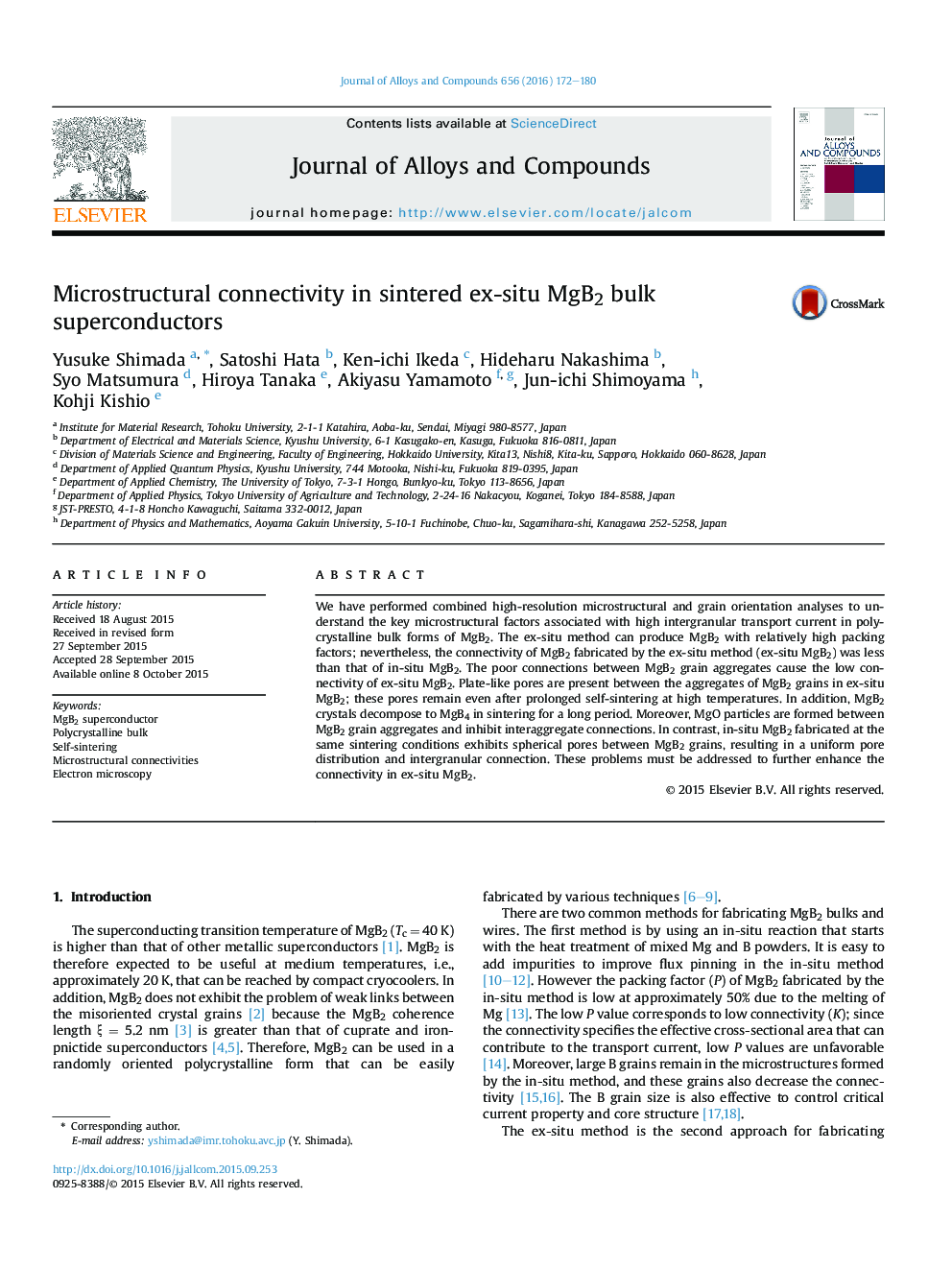| Article ID | Journal | Published Year | Pages | File Type |
|---|---|---|---|---|
| 1607651 | Journal of Alloys and Compounds | 2016 | 9 Pages |
•We elucidate the microstructure of bulk ex-situ MgB2 by using electron microscopy.•The morphology of pores in bulk ex-situ MgB2 differs from that in bulk in-situ MgB2.•The large plate-like pores reduce the connectivity and Jc in bulk ex-situ MgB2.•MgO particles interrupt connections between the MgB2 grain aggregates.
We have performed combined high-resolution microstructural and grain orientation analyses to understand the key microstructural factors associated with high intergranular transport current in polycrystalline bulk forms of MgB2. The ex-situ method can produce MgB2 with relatively high packing factors; nevertheless, the connectivity of MgB2 fabricated by the ex-situ method (ex-situ MgB2) was less than that of in-situ MgB2. The poor connections between MgB2 grain aggregates cause the low connectivity of ex-situ MgB2. Plate-like pores are present between the aggregates of MgB2 grains in ex-situ MgB2; these pores remain even after prolonged self-sintering at high temperatures. In addition, MgB2 crystals decompose to MgB4 in sintering for a long period. Moreover, MgO particles are formed between MgB2 grain aggregates and inhibit interaggregate connections. In contrast, in-situ MgB2 fabricated at the same sintering conditions exhibits spherical pores between MgB2 grains, resulting in a uniform pore distribution and intergranular connection. These problems must be addressed to further enhance the connectivity in ex-situ MgB2.
